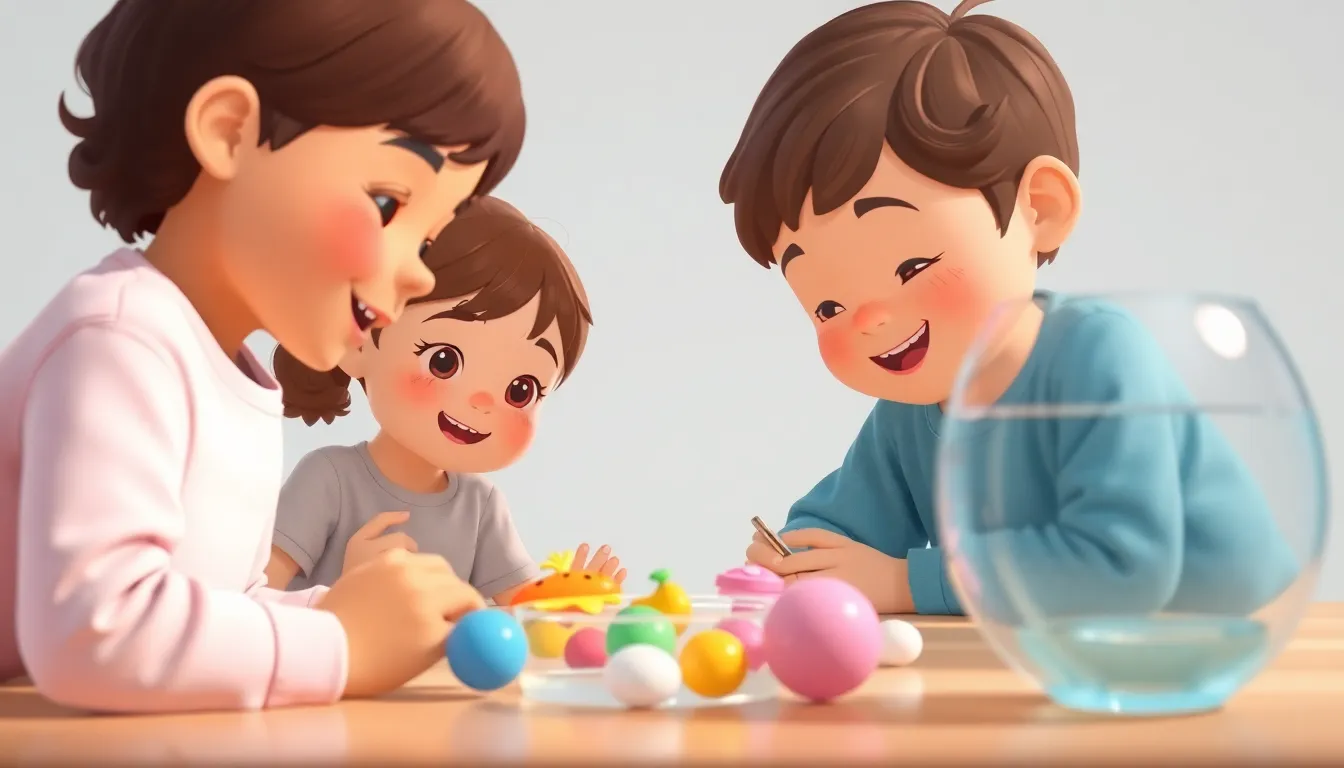
🌈 Floating Toys: Fun in the Water!
Introduction
Hello, little explorers! Today we will learn why some toys Float and some toys Sink. Let’s splash into the story together!
Why Toys Float
1. Light and Happy Toys
- A bright yellow Boat goes Up, Up, Up on the water.
- A pink Ball bounces and says “splash!”
- Light toys are Light and Happy, so they stay on top.
2. Heavy Toys That Dive
- A tiny metal Car goes Down, Down, Down.
- A gray Rock makes a “plop!” sound.
- Heavy toys are Heavy, so they sink.
(Count together: 1 boat, 2 balls, 3 cars, 4 rocks!)
Feelings and Sounds
- When a toy floats, it feels Joyful – “Whee!”
- When a toy sinks, it feels Sad – “Oh no!”
- Water makes a soft Splash, a gentle Whoosh, and a happy Gurgle.
Simple Activity: Float or Sink?
- Fill a shallow tub with water.
- Gather three toys: a plastic duck, a wooden block, and a metal spoon.
- One by one, place each toy in the water.
- Say “Float!” if it stays up, “Sink!” if it goes down.
- Count the floats: “One, two, three…!”
You can clap each time a toy floats!
Conclusion
Great job, water scientists! You saw toys Float, Sink, Splash, and Whoosh. Keep looking, keep counting, and keep wondering about the world around you. The next time you see a puddle, ask, “Will this toy float?” 🌊